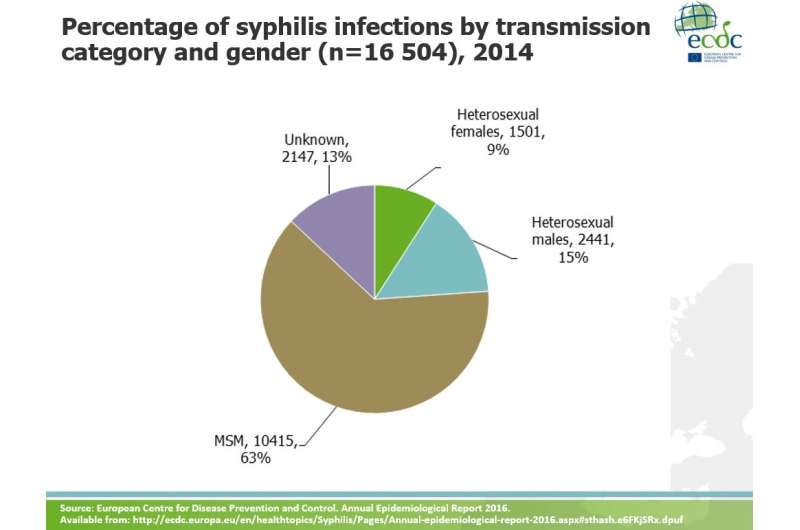Syphilis infections on the rise in Europe

New data released in ECDC's Annual Epidemiological report show that since 2010, the overall syphilis rates have been going up across Europe, particularly among men. In 2014, the reported syphilis numbers were six times higher in men than in women. Almost two-thirds (63%) of the syphilis cases reported with information on transmission category were recorded in men who have sex with men (MSM).
In 2014, 24 541 syphilis cases were reported in 29 EU/EEA Member States (no data from Austria and Liechtenstein), resulting in an overall rate of 5.1 per 100 000 population. The majority of infections were reported in people older than 25 years while young people between 15 and 24 accounted for only 13% of cases.
Between 2010 and 2014, many countries, particularly in western Europe, saw a sharp upsurge in the number of reported syphilis infections, with increases of over 50% in Belgium, France, Germany, Iceland, Ireland, Luxembourg, Malta, Norway, Portugal and the United Kingdom. While the data show a marked increase of syphilis cases among men across Europe, cases among women have decreased.
Largest increase among those aged 45 and over. Between 2005 and 2014, 208 134 cases of syphilis were reported in 30 countries. Over this decade, the proportion of cases among age groups below 35 years went down, while they went up among those aged 35 years or over. The largest increases were seen in those aged 45 years or over: their proportion rose from 18% to 30%.
The overall increasing trend of syphilis in many EU/EEA countries - driven by infections among MSM—is likely linked to changes in sexual behaviour in this group. More complete reporting and improved case detection through, for example, more testing among HIV-positive MSM, as recommended in current HIV management guidelines, have also contributed to this trend.
Promoting safe sexual behaviour and increasing testing rates among risk groups through targeted prevention campaigns is essential to prevent cases and reduce the risk of the complications of late stages of syphilis infection through earlier diagnosis. Approaches that use social media and dating apps for prevention campaigns may be considered in addition to traditional approaches.
More information: http://ecdc.europa.eu/en/press/news/_layouts/forms/News_DispForm.aspx?ID=1415&List=8db7286c-fe2d-476c-9133-18ff4cb1b568&Source=http://ecdc.europa.eu/en/Pages/home.aspx




















